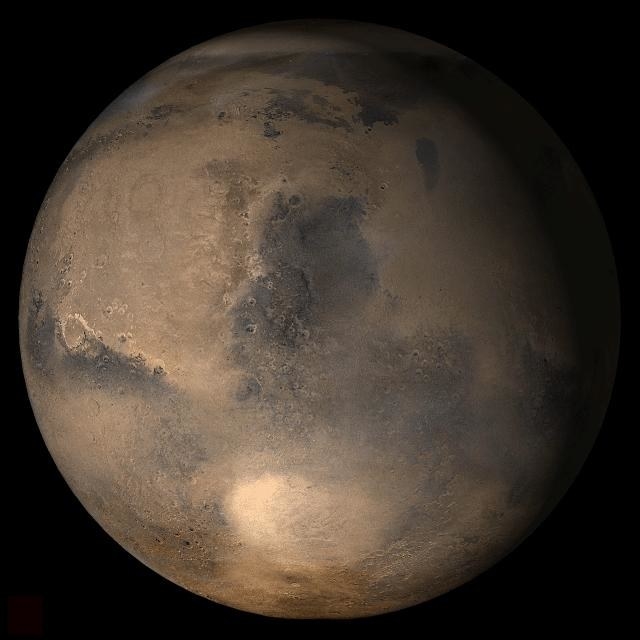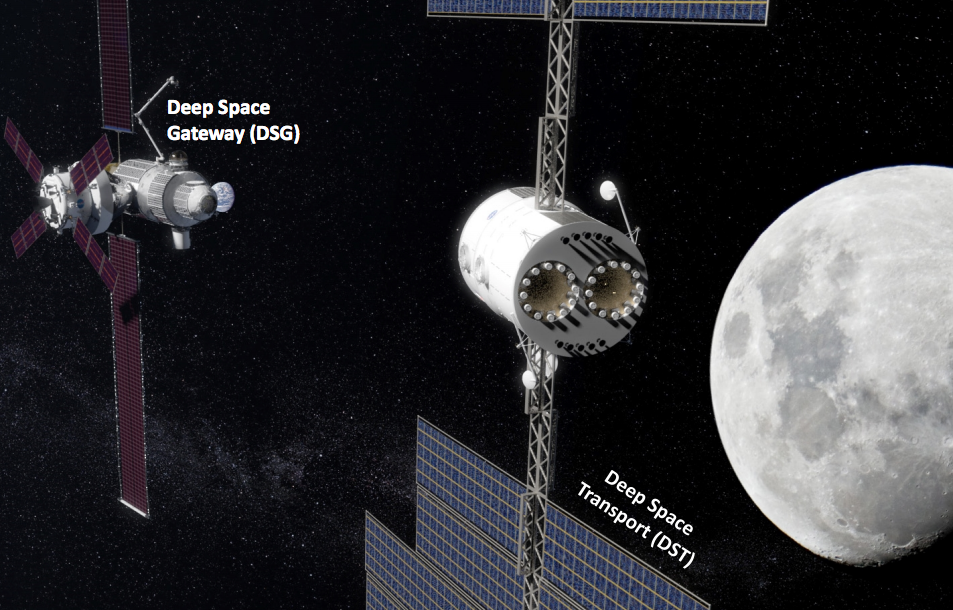
NASA hopes to go to Mars in the next two decades, and will kill its share of the popular International Space Station in order to pay for the trip.
That’s the plan NASA’s head of human spaceflight William Gerstenmaier rolled out last week. It includes building a vehicle — an armored canister shorter than a school bus and about twice as wide called the “Deep Space Getaway” — that will circle four astronauts around the moon by 2025. Then, by about 2033, the astronauts will close the hatch of another spacecraft, the “Deep Space Transport,” fire its softly purring electric motors, and depart on a years-long trip around Mars, and perhaps fly by Venus, too.
To pay for the plan, NASA in 2024 would axe its $3 billion yearly upkeep of the ISS, which since 1998 has hosted 226 people (seven of them tourists), set records for continuous space habitation, and starred in a viral video of a Canadian astronaut. The agency will also pass on another costly proposed program: sending astronauts to land on the moon.
“We are starting to look at the 2020s and I think we are teed up to do some great things,” acting NASA administrator Robert Lightfoot said on Thursday at the space agency’s advisory committee meeting.
The plan is tentative until President Trump appoints a new head of NASA. Some rumors have pointed to Rep. Jim Bridenstine of Oklahoma, a fan of moon bases, and former NASA official Scott Pace, who told BuzzFeed News by email, “I think this is very worthwhile proposal. It remains to be seen what the Congress will do, however.”
The Trump administration has already nixed the Obama-era plan for NASA astronauts to visit and retrieve an asteroid, the unloved object of the agency’s desire for the last six years.
“I don’t think there is any doubt that the Trump administration wants to do something big in space.”
“I don’t think there is any doubt that the Trump administration wants to do something big in space,” historian John Logsdon, author of John F. Kennedy and the Race to the Moon, told BuzzFeed News. “The question is whether or not that is what NASA has been planning for the last few years.”
Adopting the Mars flyby mission would keep costs within NASA’s $8.5 billion human spaceflight budget (“hopefully with an increase with inflation,” Gerstenmaier said) for the next two decades. And it would make clear that dreams of another Apollo moon landing bonanza for NASA, where a president makes a bold call for exploration and then dumps tax dollars on the space agency, are over.
All NASA has to do is convince Congress and the public that it needs to cut the cord from the ISS, which cost NASA $75 billion between 1998 and 2011, and is flying some 251 miles overhead.
The plan is the inevitable culmination of NASA’s longstanding obsession with going to Mars (dating back to at least the 1950s, when Werner von Braun sold the idea to Walt Disney Show watchers), colliding with multiple presidents lacking any interest in paying for it, while not wanting to say so.
“If we are going to get to orbit Mars in the first half of this century, NASA has to stop paying for the space station,” Logsdon said. The space agency has been flirting with ditching the space station for more than last two years, he noted.
Things are looking, if not good, then not bad for NASA under Donald Trump. While other science agencies were handed hefty cuts in his proposed 2018 budget (with the National Institutes of Health slated to take a 20% whack, for example, and the Environmental Protection Agency a 31% sledgehammering that would fire a third of its workers), the space agency escaped with a 1% proposed cut, which acting administrator Lightfoot seemed grateful for.
Trump praised NASA in a weekly address in March, calling for “new discoveries,” and signed a bill that tells NASA to keep building its jumbo Space Launch System (SLS) rocket, scheduled for a first trial next year.
The new Mars plan depends on the SLS: It will take three launches of the rocket and its Orion space capsule by 2025 to launch the Deep Space Gateway vehicle into orbit around the moon. The construction job would finally give the SLS — the $23 billion “rocket to nowhere” built in the politically potent space-center states of Mississippi and Alabama — somewhere to go.
The new head of NASA, whoever it is, will have to decide whether to approve the plan within about a year, Logsdon noted. Travel from Earth to Mars depends on an alignment of the planets, windows that open only every 26 months when the two planets come closest. It will take nine SLS launches to build the gateway, assemble a Mars spacecraft, and send it on its way loaded with astronauts. Aligning all those launches and windows takes a lot of planning.

In between now and then, NASA will also have to develop electric rockets to ship people to Mars and perfect life support for astronauts to survive intense radiation storms and lack of gravity. A Jet Propulsion Laboratory report estimated that a minimal mission might take 570 days. That makes rockets with continuous “low thrust” attractive — they are more efficient than standard rockets, and they can harvest electric power from two large solar-cell wings that will unfold from the Mars spacecraft to save fuel. Ideally, they would cut the travel time to Mars in half, with transit taking only four months.
Back on Earth, meanwhile, a February tornado with winds higher than 135 miles per hour and later rainstorms have already delayed assembly of the first SLS rocket in Mississippi, and some observers expect its first uncrewed test launch will slip to 2019. That would start the NASA deep space plan off with a delay.
The eventual Mars trip “needs to be exciting enough that it warrants the funding, but not so exciting that it takes so much money that we’ll never get it,” Gerstenmaier said at last week’s advisory committee meeting.
That rules out landing on Mars but leaves financial room for an astronaut flyby. An Aerospace Corporation analysis of a “minimal” Mars trip included in a September report from Jet Propulsion Lab engineers vouched for the reasonable costs of a mission like the one advanced last week, as long as NASA’s budget increases with inflation.
“We could promise a lot more, but the budget reality I see doesn’t allow for that,” Gerstenmaier said then. “We’re not going to get a budget increase, we’re going to stay flat line.”

The new plan “is an incremental and logical step to get ready for Mars,” Penn State aerospace engineering professor David Spencer told BuzzFeed News. “When you look at European explorers, they didn’t sail for America right away, they explored around the coast of Africa to get used to long voyages first. It’s sort of the same idea.”
One advantage of orbiting the moon first is that tests of those fancy electric motors could move its orbit up, down, and sideways in a way that makes the most sense for launching a Mars mission from it. If water hides in polar craters on the moon, as some observations suggest, bringing it back to a lunar orbiter would take less energy than shipping water from Earth to the moon, Spencer added.
Not everyone thinks the idea is so terrific, however.
“We do not need a base camp in lunar orbit to go to Mars. We do not need a base camp in lunar orbit to go to the Moon,” Mars Society President Robert Zubrin told BuzzFeed News by email. “We do not need a base camp in lunar orbit for any purpose other than to spend money on a lunar base camp.”
Zubrin suggested that the Deep Space Gateway is basically a way to justify spending money to build the SLS, which is expected to cost $2 billion a year to launch and maintain, more than not only Elon Musk’s SpaceX Falcon Heavy rocket, but also other heavy rockets under development. If NASA goes ahead with the lunar orbiter, he predicts, it will delay a mission to Mars by a decade or more. He also questioned the ethics of testing radiation safety on astronauts in lunar orbit.
“Astronauts should be explorers, not guinea pigs,” said Zubrin.
Ken Bowersox, a former astronaut who logged five missions aboard the ISS and is the interim chair of the advisory panel, also expressed doubt that the ISS would fold shop as quickly as NASA hopes, either sold off to a private company or disassembled and de-orbited, scattering burnt debris across the Indian Ocean.
“I expect it would be more gradual,” he said, with his committee suggesting that the ISS’s life support tests might need to continue until 2028. That could leave NASA in a box, with money spent on the ISS continuously delaying its trip to Mars.
It also could paralyze NASA’s European partners, Logsdon said, whose own missions will be influenced by whether the ISS sticks around. “Anything NASA does in deep space will require international cooperation,” he said.
Meanwhile, the private sector might get there first. SpaceX founder Elon Musk, a Trump adviser, has proposed sending people directly to Mars starting in 2023. He is also collaborating with NASA to land an empty crew capsule on Mars, the “Red Dragon” mission, with one of the first launches of his Falcon Heavy spacecraft, a cheaper competitor to the SLS, next year.
“It won’t happen, but could you imagine if Trump named Elon to head NASA?” said Logsdon. “That would certainly take NASA in a new direction.”
Outside Your Bubble is a BuzzFeed News effort to bring you a diversity of thought and opinion from around the internet. If you don’t see your viewpoint represented, contact the curator at bubble@buzzfeed.com. Click here for more on Outside Your Bubble.
